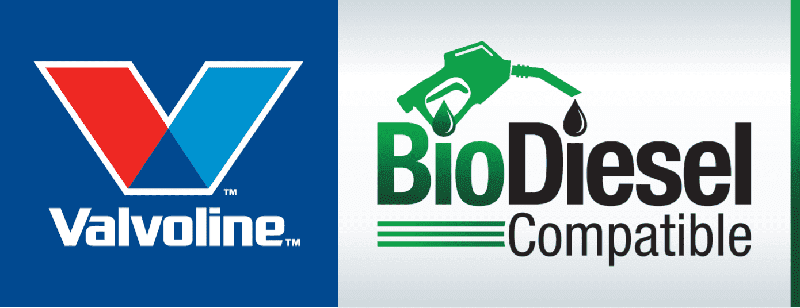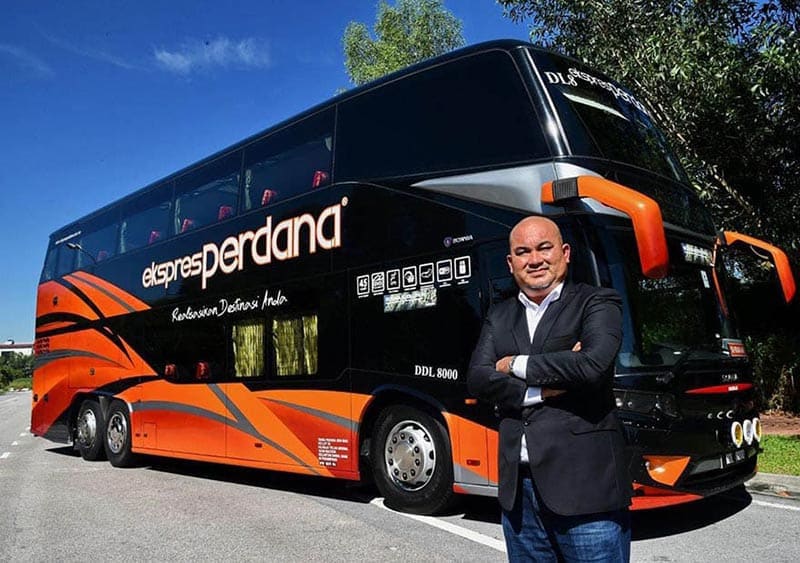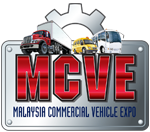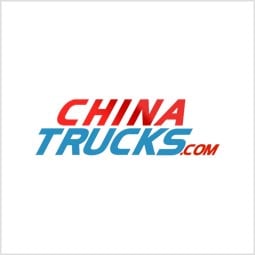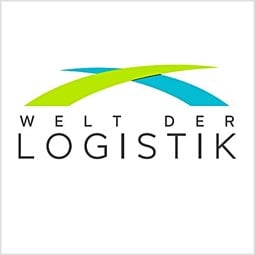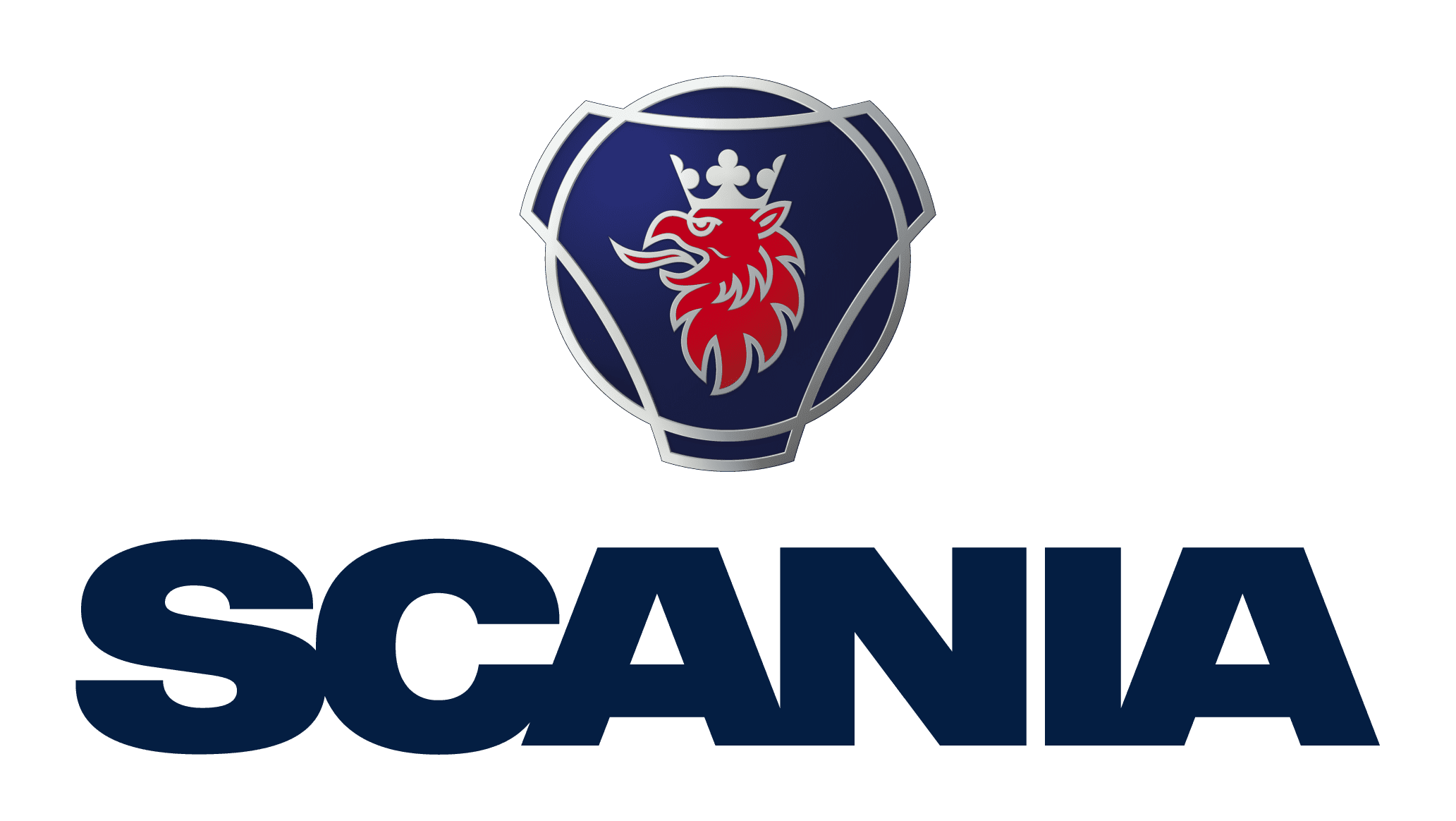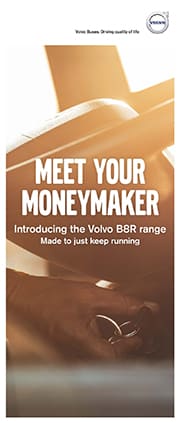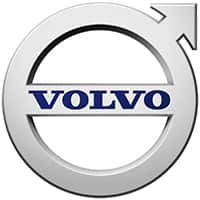News 2020 EN BUS
Mercedes-Benz Buses Website Wins Several Awards
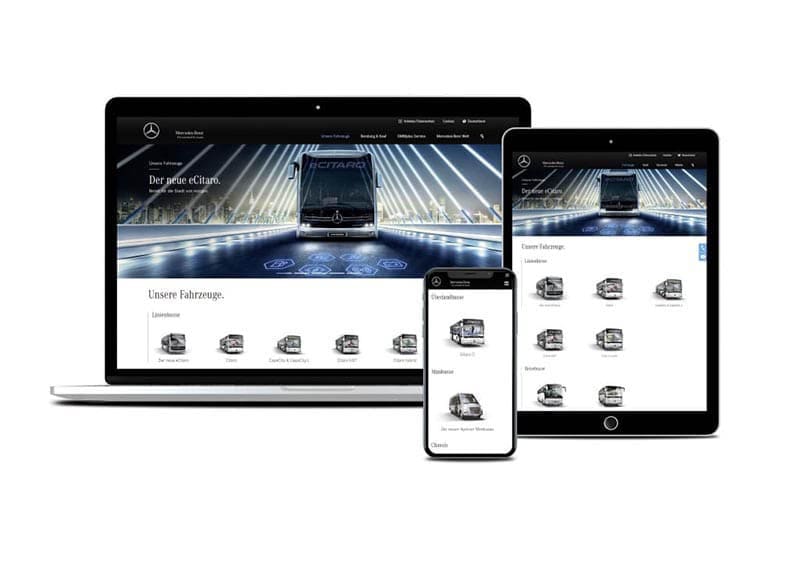 Awards showered on Mercedes-Benz Buses: the attractive, informative online presence has received a number of awards. Recently, the focus was on its high user-friendliness. It received the "German Brand Award" for 2020 as the "winner" in the "Excellence in Brand Strategy and Creation - Brand Communication – User experience" category. The German Brand Award is considered one of the leading German brand awards.
Awards showered on Mercedes-Benz Buses: the attractive, informative online presence has received a number of awards. Recently, the focus was on its high user-friendliness. It received the "German Brand Award" for 2020 as the "winner" in the "Excellence in Brand Strategy and Creation - Brand Communication – User experience" category. The German Brand Award is considered one of the leading German brand awards.
The website won three prizes in the distinguished 2020 "German Stevie Awards": the prizes awarded to the Mercedes-Benz Buses website were the "Gold Stevie" for the best overall design and the best interface design, and the "Silver Stevie" in the "Best Website – Automotive and Transportation" category. The German Stevie Awards are high-level business prizes for German-language businesses in Europe.
Companies from Germany, Austria, Switzerland, Liechtenstein, Luxembourg and Belgium are entitled to participate.
From the internationally renowned "Mercury Awards" for professional communication, the Mercedes-Benz Buses website also received two awards: gold in the Corporate section for its online brand presentation and silver in the Online Magazine category.
The prize-winning Mercedes-Benz Buses website not only informs about products, but also presents a wide variety of up-to-date news about buses with the three-pointed star; it also offers information for companies, drivers and friends of Mercedes-Benz Buses.
100 Yutong Electric Buses Exported to Kazakhstan
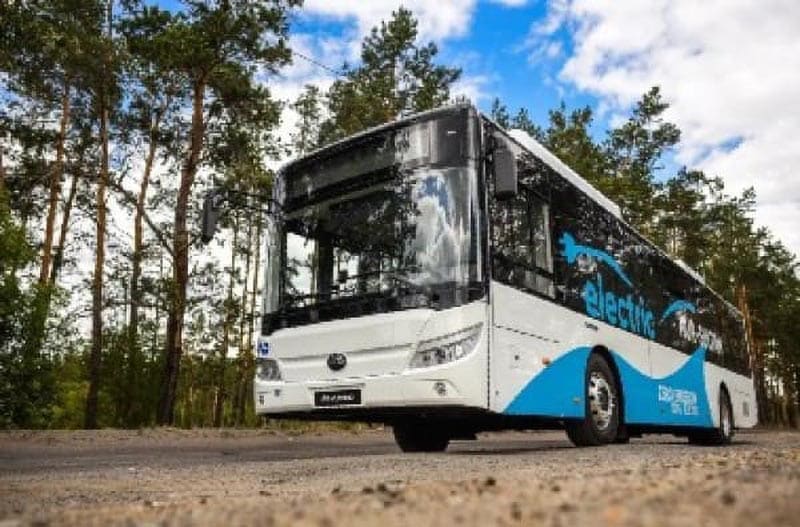 Recently, 100 Yutong E12 full electric buses arrived in Kazakhstan. The first batch of 20 buses has been put into operation in the core bus routes of Nur-Sultan, capital city of Kazakhstan and the second coldest capital in the world. By participating in Busworld Central Asia last year, Yutong's pure electric buses have gained popularity in the bus industry in Kazakhstan, which helped Yutong to get this contract to a certain degree.
Recently, 100 Yutong E12 full electric buses arrived in Kazakhstan. The first batch of 20 buses has been put into operation in the core bus routes of Nur-Sultan, capital city of Kazakhstan and the second coldest capital in the world. By participating in Busworld Central Asia last year, Yutong's pure electric buses have gained popularity in the bus industry in Kazakhstan, which helped Yutong to get this contract to a certain degree.
This is the largest single order of full electric buses in Kazakhstan and even in the CIS countries as Yutong reports. Despite Kazakhstan is the largest country of oil and gas resource in Central Asia, it is involved in the wave of global new energy development. In January 2019, the Kazakhstan customers took a Yutong full electric bus for trial operation in Nur-Sultan. Mid 2019, Kazakhstan held a bidding of new energy buses, which was won by Yutong. During winter temperature in Nur-Sultan is usually below minus 40℃. In order to conquer this freezing cold weather Yutong has taken a variety of measures on the thermal resistant performance of these full electric buses to withstand this local special climate environment and meet the full-day operational demand after being fully charged.
As of December 2019, Yutong's total sales volume in Kazakhstan since 2005 has exceeded 2,000 units, accounting for more than 40% of China's exports of large and medium-sized buses exported to the country. Yutong has exported more than 70,000 units of buses and coaches worldwide, and has achieved the sales of new energy vehicles in France, UK, Bulgaria, Iceland, Denmark, Finland, Chile, Mexico, Kazakhstan, China Macau, etc. The Chinese company has more than 200 authorized service stations or service companies in overseas markets, and over 320 authorized service outlets. It has also established a number of overseas spare parts centers in Russia, Australia, Panama, South Africa, UAE and other countries.
Promising Mix of International and Local bus & Coach Manufacturers at Busworld in Kazakhstan
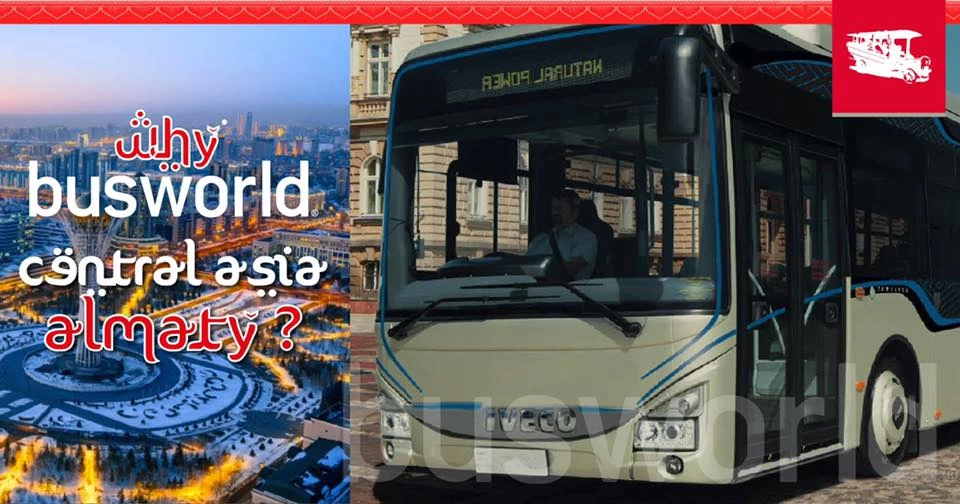 The first edition of Busworld Central Asia will be held in Almaty, Kazakhstan, from 25 to 27 June 2019 in the Atakent International Exhibition Center. Almaty is the largest city in this vast country. Kazakhstan is the hub of other neighbouring “stan” countries such as Uzbekistan and Turkmenistan and the link between China and Europe via the ‘Silk Road’ connection.
The first edition of Busworld Central Asia will be held in Almaty, Kazakhstan, from 25 to 27 June 2019 in the Atakent International Exhibition Center. Almaty is the largest city in this vast country. Kazakhstan is the hub of other neighbouring “stan” countries such as Uzbekistan and Turkmenistan and the link between China and Europe via the ‘Silk Road’ connection.
Kazakhstan was formerly part of the Union of Soviet Socialist Republics and its public transport systems were closely modelled on those of Russia. The country relied heavily on Russia for buses and that continued for several years after the dissolution of the Soviet Union in 1991.
Kazakhstan is a huge country and has large reserves of oil and gas. The country is larger than Western Europe in territory and is land-locked. That creates a challenge in exporting oil and gas but demand is strong from countries like its neighbour, China.
Bus manufacturers from outside the former USSR have been making steady inroads to the Kazakh market. There is demand for low floor layouts and also alternative fuels like CNG. There is some local assembly of buses, but the potential to increase is quite considerable.
It is estimated that 50% of the population of around 18.5 million people live in urban centres. Alternative means of public transport are very limited, so that will stimulate demand for better and more frequent bus services.
There are banking, financial and legal systems in place to support the import of vehicles, components and services. It is estimated that more than $40 billion worth of foreign investment has been pumped into Kazakhstan in the oil, natural gas and mineral industries in the last fifteen years or so. These industries will also require transport, principally for employees.
At the exhibition, a vast range of buses and coaches will be presented by: Anadolu Isuzu, Arobus, Astana Motors (Hyundai), Autocapital (Mercedes-Benz), Belkommunmash, , JV MAN Auto, Kamaz Trading Company, Otokar, Saktagan, Samauto and Saryarka Avto Prom (Ankai Buses).
The Truth About Retreads
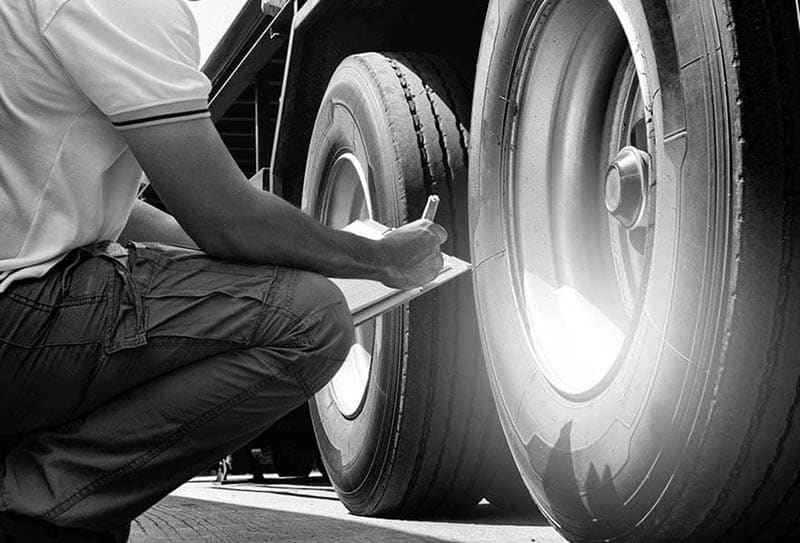 In February, Alwyn Lau of the Malay Mail wrote an article, titled: “Malaysia’s ignored hazard: Trucks with bad tyres”. Michael Hutt, Group Marketing Manager, Kit Loong Commercial Tyre Group responds to Mr Lau's wrong and misleading statements.
In February, Alwyn Lau of the Malay Mail wrote an article, titled: “Malaysia’s ignored hazard: Trucks with bad tyres”. Michael Hutt, Group Marketing Manager, Kit Loong Commercial Tyre Group responds to Mr Lau's wrong and misleading statements.
Certainly, road safety in Malaysia needs a lot of improvement (The Ministry for Transport has set a 2014-2020 road safety plan that is currently not on target, so it’s clear more work needs to be done). Anyone championing road safety is an ally in the fight to create safer roads and to reduce fatalities. Some businesses do not put safety first, and even more worryingly, safety Standard Operating Procedures are not well enforced. This is cause for concern and we must pressure the right organisations, both public and private, to do their part in improvement of these areas. It is also important to recognise that cost is always an essential control in business; the balance needs to be right, but safety always comes first, and it doesn’t have to be more expensive.
However, the rest of Alwyn's article is somewhat confusing and offers nothing in terms of a practical approach to solving any issues. I want to address a few of his misleading and Inaccurate points, to set the record straight:
Firstly, Lau writes: “It’s an open secret that one of the most frequent causes of deaths on the highway are trucks, buses and lorries”.
This is incorrect by some margin. The last fully-broken-down report (www.mot.gov.my: Road Safety Plan of Malaysia 2014-2020), citing vehicle descriptions in accidents (2013) shows that 45.9 percent of all road accidents are motorcycles, with lorries and busses responsible for just under 12 percent. As an update, in 2018 (The Malaysian Reserve: “Road accidents are 4th major cause of death in 2018 say Loke"), Anthony Loke, then Minister for Transport said: “more than half of the (road) deaths, or about 66 percent, involve motorcyclists.” A 2012 report by IATSS (Science Direct “Motorcycle fatalities in Malaysia”) stated: “The analysis reveals that the highest numbers of motorcycle fatalities occur in rural locations (61 percent), on primary roads (62 percent) and on straight road sections (66 percent) ... Although fatal motorcycle crashes mostly involve ‘passenger cars’ (28 percent), motorcyclists are responsible for 50 percent of the collisions either by crashing singly (25 percent) or with other motorcyclists (25 percent).” So, there is no reason bases In fact to assume that lorries and busses are the most frequent cause of death on Malaysia's roads. It is mostly due to motorcycles in rural locations. Even if we assume Lau means ‘just’ on highways, with trucks and busses contributing just 12 percent of the overall figure, there is no possibility the comment can be true.
Lorry and bus operators need to do their part in improving safety on our roads, as heavy road users it is their responsibility to protect their drivers and other on the road, but to claim they are responsible for ‘the most frequent’ cause of deaths is false and distracts from us tackling the issues that could save the most lives.
Secondly, Lau concludes that there are two main ‘root’ causes of these accidents:
“The root cause of the above kinds of accidents can be traced to two points:
Greedy business owners cutting costs by refusing to maintain their trucks properly e.g. by retreading tyres instead of replacing tyres
Drivers being made to drive crazy long hours with insufficient rest, yet continuously incentivised to drive even more (as this reduces the need to increase the number of drivers)”
Now, as I stated, there are some businesses that do cut corners, there’s no doubt about it. But it’s not very helpful to point this out without being able to pin-point actions to help rectify this. After all, the law is very clear in these areas. There is a general lack of enforcement of the laws that contributes to people thinking they can ‘get away with it’, when cutting corners. This has to stop. The Government is ultimately responsible for the safety of all of us and this brings us to the point where we say that human nature will mean people will try to get past the rules, so we, as an industry, along with governing bodies and associations, must have a clearer plan to make sure rules are always abided by.
MS ISO 39001:2013 Road Traffic Safety Management System (RTSMS) is a great standard and is being pushed and adopted by many in the land transport sector, but the plans for enforcement are scant. It is clearly recognised that there is a lack of systematic work and commitment among organizations that affect the safety of the road transport system. This needs to be rectified. At Kit Loong, we have a set of services called SC3OCT that are fully certified and will help companies comply with both this ISO and other relevant ISOs and lead to full compliance with Puspakom inspection standards. We would be happy to work with authorities to show how we enforce these rules and standards with our clients.
Finally, Lau asserts: “Retreaded tyres should be made illegal. Period.”
This statement shows a clear lack of understanding of what a retread is, why it exists, where it is and should be used, how it affects the environment and their benefits to both companies and the economy. In addition, it demonstrates a complete lack of knowledge about the stringent safety steps that go into making a retread tyre.
My first point is an obvious and often used one… but it shows that retreads per se are safe. Eighty percent of aircraft tyres are retreads. In the USA, in 2020, an Executive Order was signed that required Federal agencies to replace OEM tires with retreaded tires rather than new tyres whenever possible. Most tyres used on airplanes are commonly owned by the big manufactures, such as Goodyear and Bridgestone, with guarantees of a number of take-offs and landings per tyre. No airline would run the risk of using something that was innately unsafe, no manufacturer would take the responsibility if they couldn’t be sure they were also providing a product of top quality.
Let's get more into the weeds.
Malaysia has very stringent guidelines on the material used in and the actual production of retread tyres. Tyre liners have to conform to regulations set out by the Department of Standards Malaysia, (Standards Malaysia), specifically, MS 224:2005, as certified by SIRIM QAS International, which is part of The International Certification Network, which gives these products access to 37 national markets by meeting these standards. This means the materials are safe, regulated and of high enough standard for international export. Unlike ISO standards, every product must meet high criteria to meet MS224. The retread production process conforms to ISO 9001:2015, a process created for ‘quality management systems’ in the provision of retreading tyres. This is a very detailed process and is adhered to globally to produce top quality retreads. Go and visit any reputable retread factory and you will see very modern machinery and processes, alongside equipment specifically designed to make the products safe. From x-ray-like scanners to look for anomalies in the casings, through to high-pressure testing, the whole operation is designed to produce high-quality, safe retread tyres.
The US and European trucking industries are both heavy users of retread tyres. In Europe’s five top wealthiest nations (France, Germany, UK, Spain, Italy), the retread market makes up 30 percent of the total truck tyre market (ey.com/fr: "The socio-economic impact of truck tyre retreading in Europe"). This equates to 3.2 million units. The US uses 14.3 million retreads for commercial vehicles. These countries have nowhere near the level of road fatalities that we do in Malaysia, but are still keen users of retread tyres for commercial vehicles. So what’s the difference and why are perceptions here so negative?
In a word: quality. But to add some meat to the bones, it is about three main factors: casings, process and material. Not all casings are created equally. The disparity in the quality of new tyres is vast. It’s commonly accepted that half of the burst tyres you see on the road are not in fact retreads, but cheap new tyres. The ‘big’ players invest a lot of time and money into researching the safest compounds, new ways to disperse water, better ways to run tyres hotter, how to make their casings better for retreading. All of this means that some new tyres are both very safe, will travel long distances with good maintenance and be better made for retreading (all the top companies make their tyres specifically to be retreaded, just as a lot of them will retread them and sell them again under their own brands).
Process is vitally important in the creation of retreads. The very first part of the process is to grade the casings to make sure they are safe to be retreaded. This even involves x-raying the casings to make sure there are no hidden deformities in the casing. The rest of the process is similar to creating new tyres. Many retread factories have spent millions of ringgit on the latest technology to guarantee the best product. Often, a retread tyre will have the capacity for longer mileage than the original casing tread allowed. This is because often retreaders understand local issues better than global companies and can use the materials best suited to that environment, both in terms of natural and road environments.
Which brings us on to the final element, materials, which make up the ‘new’ tread applied to the casing. By using the best compounds, most suited to application and environment it is very fair to suggest that a well-produced, quality-controlled retread tyre that conforms to all local and international certification, can be as safe to use as a new tyre.
Lau mentions at the end of the article, (we must) “Limit the number of hours drivers are allowed to work.” This has nothing to do with the difference of safety between retreads and new tyres, but it is very important, and we commend him if he is to focus his time in improving workers conditions of heavy vehicle drivers. To add to this, a few other important areas need to involve both driver safety training and initiatives to create safer roads across the country.
Now, to address the main issues when it comes to retread tyres in Malaysia, so that we can actually offer some practical advice. First, only ever buy retread tyres from reputable sources, these are manufactures who have both certification, the likes of MS224, but also those producers who have retread programmes with the big tyre brands. If a tyre brand has endorsed a manufacture, it’s likely they are of a quality you can trust.
Secondly, even the best tyre will face issues if it isn’t maintained correctly, such as simple things like getting the correct inflation for the load will prolong tyre life to what is expected. These are the areas companies purchasing tyres should be focused on, and. Lau is correct to say this is their responsibility and there should be no cost cutting when it comes to safety. And the simple fact is, running a safe operation is actually more profitable than an unsafe one. A 2012 study by EY found that: “Companies in the top 20 percent of risk maturity generated three times the EBITDA as those in the bottom 20 percent.”
Lau ends his article with the statement “Puspakom, I have spoken.” This is another clear indication of him not understanding the fundamentals about the transport industry. At the time of the inspection at PUSPAKOM every six months, a commercial vehicle may be in a perfect state. However, five months later, tyres could be worn beyond the allowed limits. In that case, it would be JPJ though that is responsible to identify and enforce upon the culprit, not PUSPAKOM.
The MCO Weight Loss Challenge by Hino Motors Sales (Malaysia) Sdn Bhd
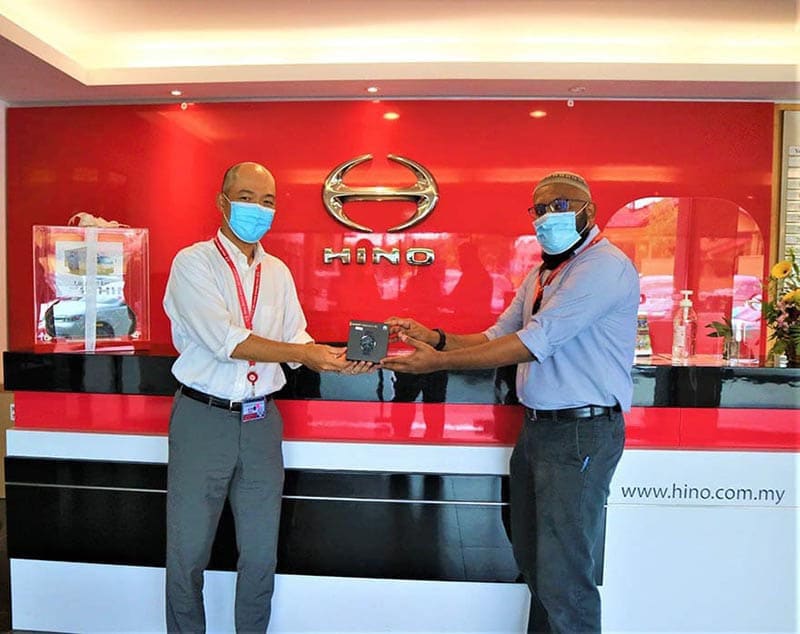 With the objective to encourage Hino Malaysia staff to practice a healthy lifestyle during the Movement Control Order (MCO), where all Malaysian are advised to stay and work from home, Hino Motors Sales (Malaysia) Sdn Bhd (Hino) initiated this internal campaign. To keep the bonding among the staff, Hino’s management came out with the program and it is part of the concept of ‘Fun & Smile’ implied in Hino’s workplace culture.
With the objective to encourage Hino Malaysia staff to practice a healthy lifestyle during the Movement Control Order (MCO), where all Malaysian are advised to stay and work from home, Hino Motors Sales (Malaysia) Sdn Bhd (Hino) initiated this internal campaign. To keep the bonding among the staff, Hino’s management came out with the program and it is part of the concept of ‘Fun & Smile’ implied in Hino’s workplace culture.
Named “Weight Control Order (WCO)”, the campaign ran for one month (1st – 30th April 2020) and saw 30 active participants from within the Hino Malaysia staff. The challenge was simple: all participants were asked to set target for their weight loss with a minimum of 500g. All participants were having an exercise session together for 30 minutes, starting at 5:30 pm via Microsoft’s Teams platform.
As incentive, the champion won a Huawei Smart Watch, while participants who achieve the target received AEON Voucher RM100. To add another level of difficulty, the champion was not solely chosen based on the amount of weight lost, but based on the target achievement.
Example:
Person A: Target to lose 1kg, Achievement: Lose 3kg
Person B: Target to lose 2kg, Achievement: Lose 2kg
Person B is chosen as the Champion
Emerging as the champion was Mohammad Yahiz. His weight loss was set to 5kg and he achieved his target. He is shown here receiving his prize from Mr. Atsushi Uchiyama, Managing Director of Hino Motors Sales (Malaysia).
Bus Operators: Start Your Engines
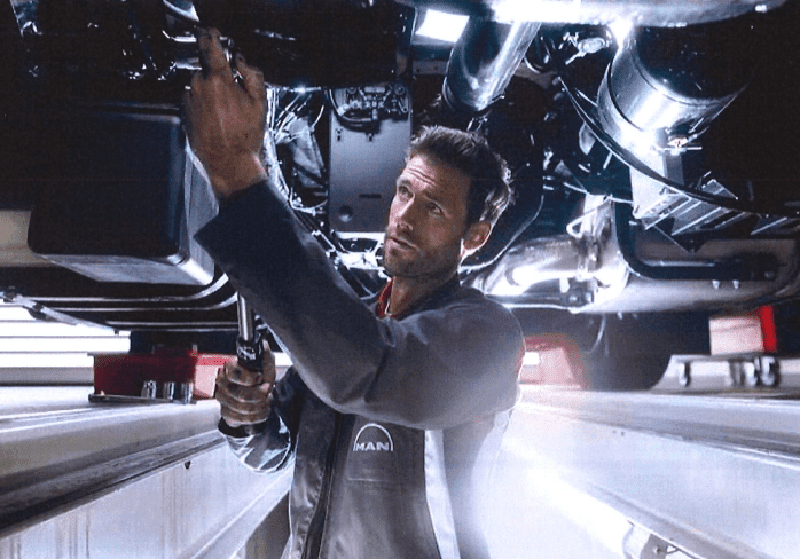 Some buses have been parked idle for a few weeks now. With the economy opening up, more and more buses and coaches are needed back on the road. However, after such an extended period of being parked, vehicles should be given a check before putting back to duty. To ensure that the vehicles are safe to operate and in good working order, MAN Truck & Bus (Malaysia) offers a "Health Check Light Package". Taking only a short while, the checklist comprises of over 30 points and will give the owner an overview of the vehicle's status. At only RM 280, the Health Check Light is available for a limited time.
Some buses have been parked idle for a few weeks now. With the economy opening up, more and more buses and coaches are needed back on the road. However, after such an extended period of being parked, vehicles should be given a check before putting back to duty. To ensure that the vehicles are safe to operate and in good working order, MAN Truck & Bus (Malaysia) offers a "Health Check Light Package". Taking only a short while, the checklist comprises of over 30 points and will give the owner an overview of the vehicle's status. At only RM 280, the Health Check Light is available for a limited time.
Busworld India Rescheduled to October
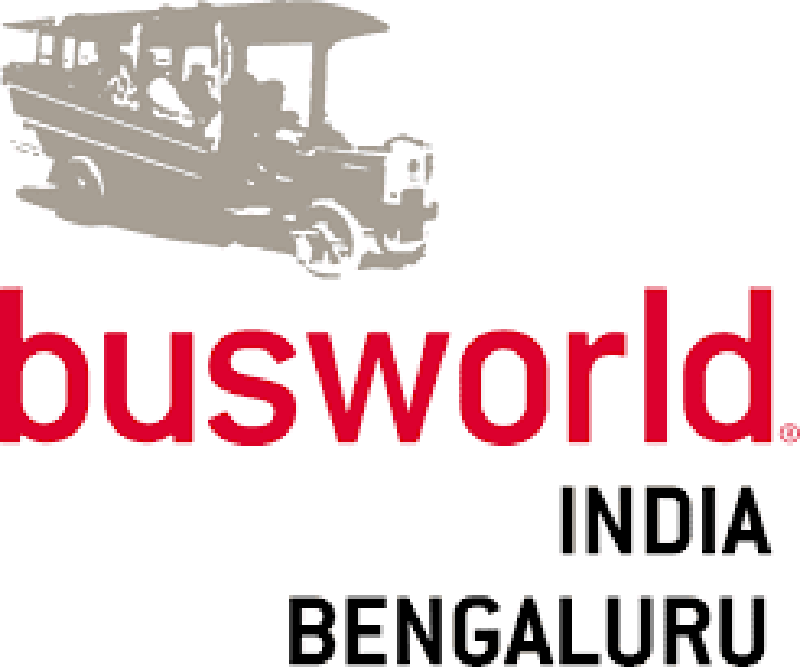 With global trade and travel restrictions in the current situation, Busworld and Messe Frankfurt India have jointly announced the postponement of Busworld India. Originally scheduled to be held in August 2020 at the Bangalore International Exhibition Centre (BIEC) in Bengaluru, the trade fair will now take place from 6 – 8 October 2020 at the same venue.
With global trade and travel restrictions in the current situation, Busworld and Messe Frankfurt India have jointly announced the postponement of Busworld India. Originally scheduled to be held in August 2020 at the Bangalore International Exhibition Centre (BIEC) in Bengaluru, the trade fair will now take place from 6 – 8 October 2020 at the same venue.
Taking into account the caution advisories in the current situation and aiding ease of business for the Bus & Coach sector, the 2020 edition of Busworld India has been pushed ahead until October to ensure that the industry can brace itself for an effective business comeback. World-over, the corporate sector is working around undefined parameters, which can make it challenging for exhibitors and visitors to travel and attend business normally in the months following the lockdown. After close consultations with exhibitors and industry associations who were strongly in favour of the postponement, the organisers felt that this is the best and responsible course of action for the industry, which will also give exhibitors time to plan their participation more effectively.
A joint statement issued by Busworld and Messe Frankfurt India stated: “As organisers, we want to ensure that the event optimally serves its objectives, when the industry can unreservedly come together for knowledge and tech-exchange. We have been in constant dialogue with industry players who are strongly in favour of this decision. The environment has to be conducive for business – and more importantly for the health of our exhibitors, visitors, employees and all stakeholders.”
Busworld India will continue to be a unifying event for the Indian Bus & Coach industry to encourage innovations and exchange of technology that will build strategic co-operation and collaborations within the sector. Between now and its opening in October, the organisers aim to continue to keep the industry connected through its webinar series to put the on-ground situation into perspective, and support the sector in the recovery phase.







